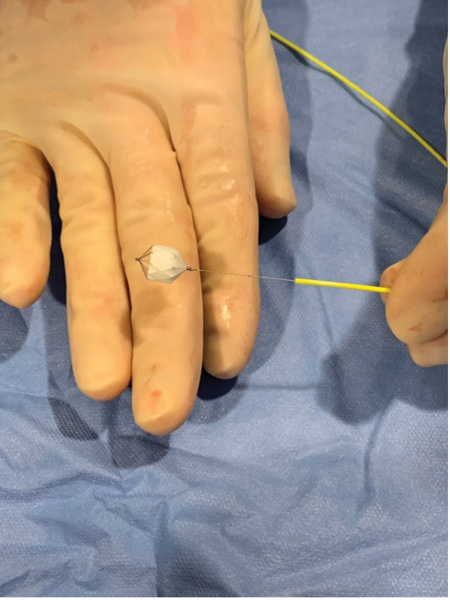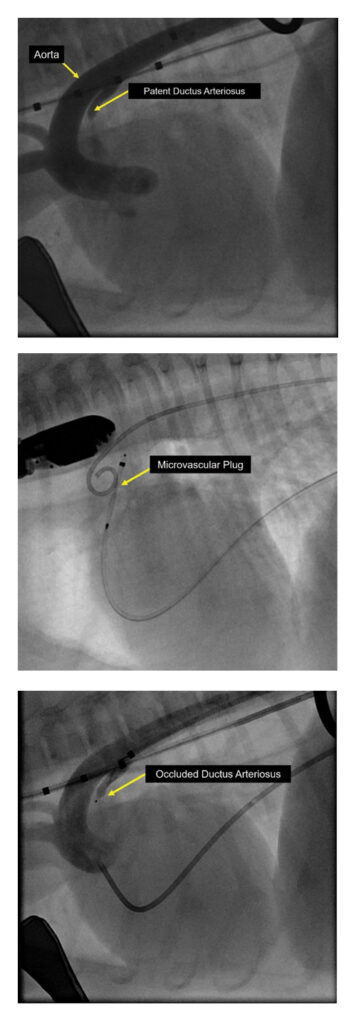
Patent ductus arteriosus (PDA) is one of the most common congenital heart defects in dogs. While minimally invasive transcatheter occlusion is now considered the gold standard for treatment, very small dogs, particularly those weighing under 2 kg (4.4 lbs), have historically been excluded from this option due to limitations in catheter and device size. As a result, these patients were often referred for surgical ligation via thoracotomy, a more invasive procedure with longer recovery times.
A Less Invasive Alternative for Tiny Patients

Fig. 2. Intra-operative image of the MVP device just before deployment across the PDA.
Fig. 3. Intra-operative angiogram with the MVP device positioned across the ductus arteriosus demonstrating complete occlusion of the defect.
At the University of Illinois Veterinary Teaching Hospital, we are now able to offer transcatheter PDA occlusion for many of these very small patients using a specialized device known as the Medtronic Microvascular Plug (MVP). Originally developed for human neurovascular procedures, this device is well-suited for closing small-diameter PDAs in toy breed dogs and puppies that might otherwise be considered too small for transcatheter closure.
Our experience with this device has been highly encouraging, with excellent procedural outcomes and rapid recovery. Patients typically go home the next day, avoiding the pain, risk of bleeding, and prolonged convalescence associated with a more invasive surgical option (however, surgical ligation of PDA in dogs has a similar success rate of >98%).
Patient Selection and Referral
Ideal candidates for MVP-based transcatheter PDA closure include most dogs under 2 kg, or dogs of any size with a PDA that cannot be occluded with standard methods. Pre-procedural evaluation typically includes echocardiographic confirmation of PDA anatomy and size, and thoracic radiographs or advanced imaging as indicated.
Looking Ahead
We are excited to be able to offer this minimally invasive alternative for our smallest patients and look forward to continued success using this technique. If you are managing a patient with a known or suspected PDA who may benefit from this approach, we encourage you to contact us for referral or consultation.
By Carl Toborowsky, MS, MA, VMD, DACVIM (Cardiology), FASE
Contact Cardiology
For more information, please contact the cardiology service at the Veterinary Teaching Hospital:
go.illinois.edu/cardioconsult
vthcardiology@vetmed.illinois.edu
217-333-5311 (Veterinary Teaching Hospital referral coordinator)




